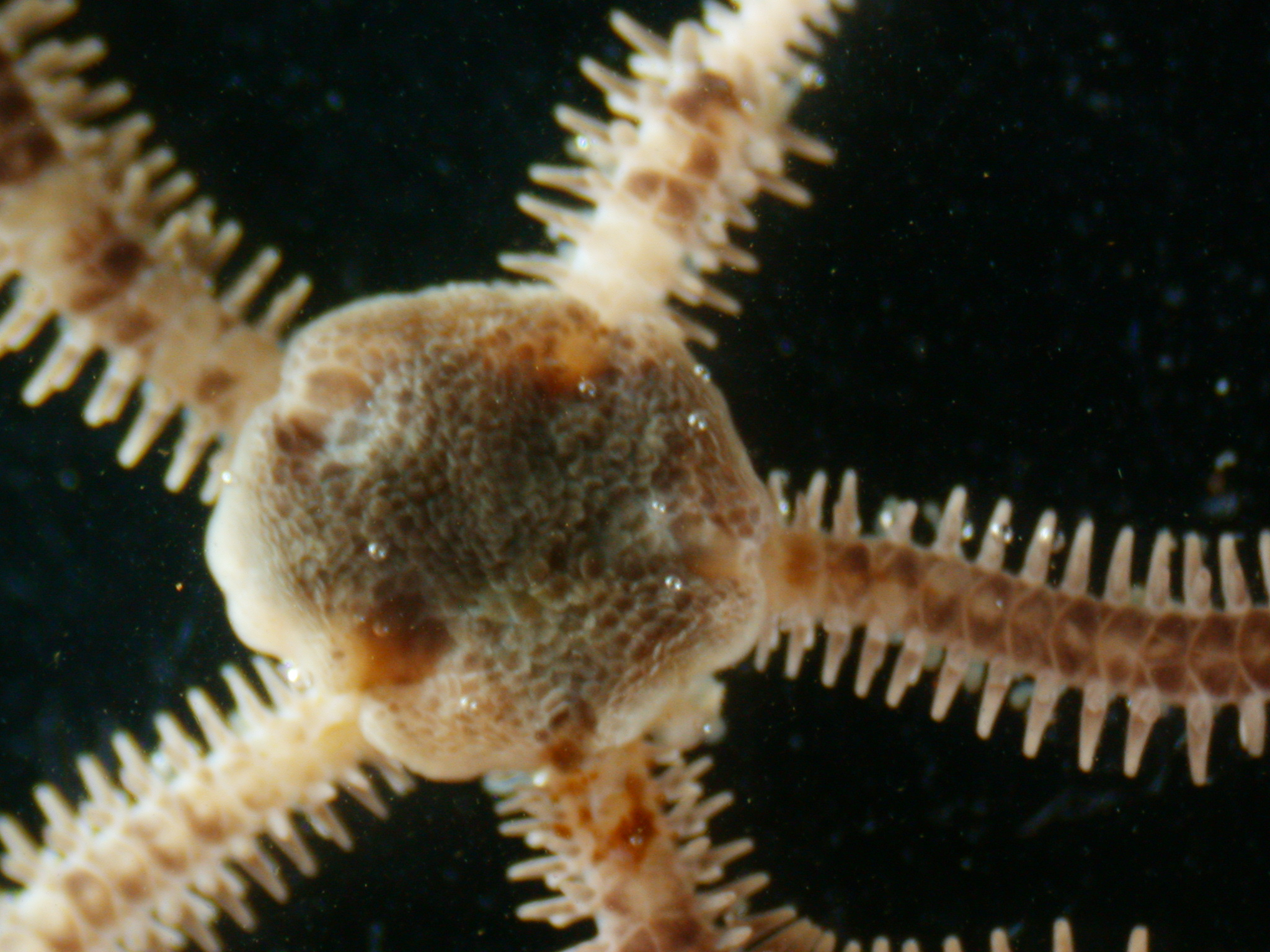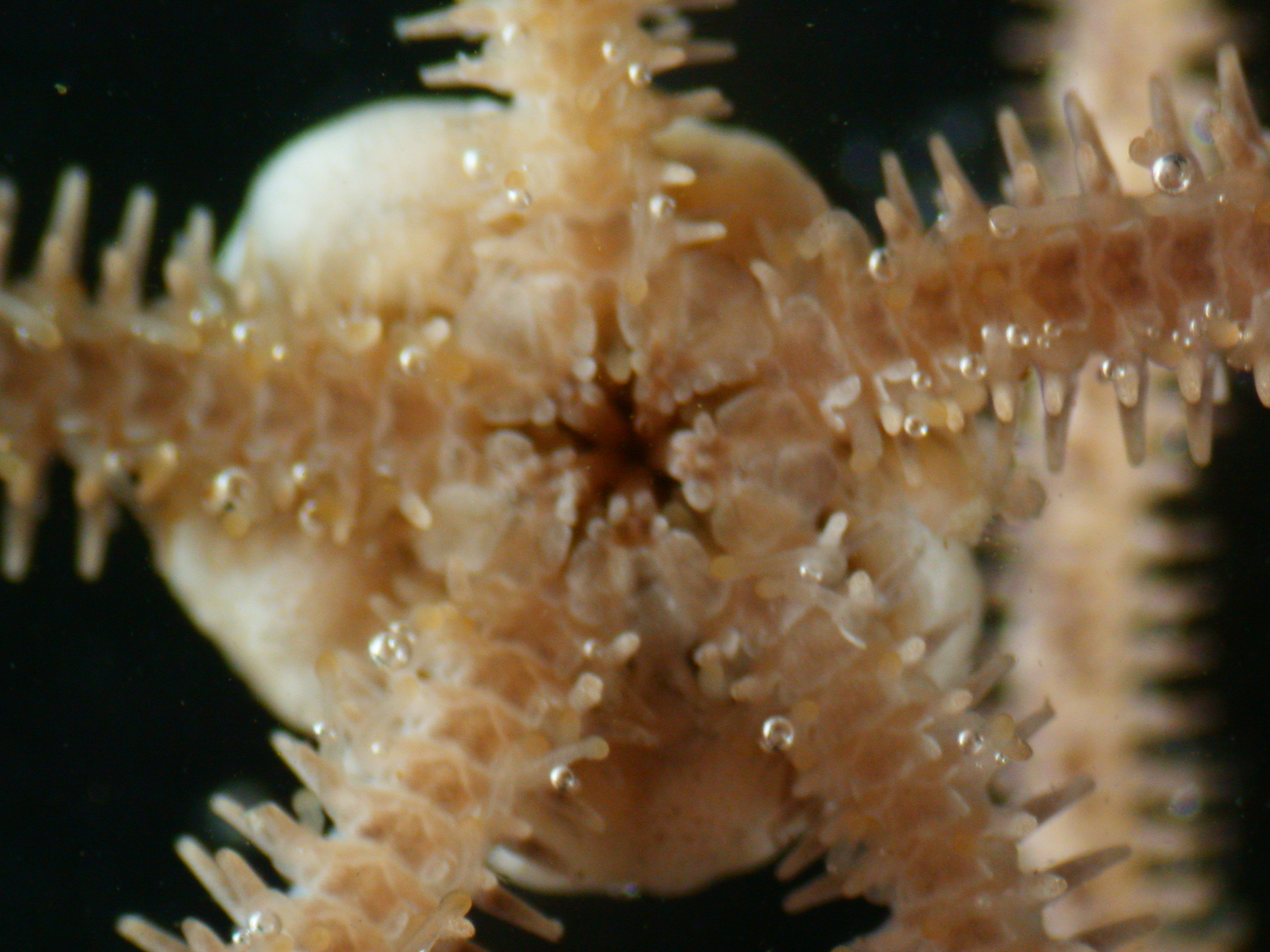A brittle star was obtained intertidally at Oshoro Bay, Hokkaido, Japan, about 43°21′N, 140°85′E, on 21 May 2012 by Mizuho Kino and Tihiro Tobita, photographed and identified by Hiroshi Kajihara as Ophionereis reticulata based on , and fixed in 99% EtOH. DNA was extracted from an arm using the silics method (Boom et al. 1990) with some modifications. Extracted DNA was dissolved in 30 µl of deionized water and has been preserved at –20°C. Remaining morphological voucher specimen has been deposited at the Hokkaido University Museum under the catalogue number ICHU22100067 (contact: Dr. Hiroshi Kajihara, kazi@mail.sci.hokudai.ac.jp).
An about 1.2K-bp fragment of 28S rRNA gene was amplified by polymerase chain reaction (PCR) using LSU5 (5′-ACCCGCTGAAYTTAAGCA-3′) and LSU3 (5′-TCCTGAGGGAAACTTCGG-3′) (Littlewoodet al. 1994). A hot start PCR was performed by a thermal cycler, DNA Engine, in a 20-µl reaction volume containing 1 µl of template total DNA (approximately 10–100 ng) and 19 µl of premix made with 632-µl deionized water, 80-µl Ex Taq Buffer (TaKara Bio), 64-µl dNTP (each 25 mM), 8-µl each primer (each 10 µM), and 0.1-µl TaKara Ex Taq (5 U/µl,TaKara Bio). Thermal cycling condition comprised an initial denaturation at 95°C for 30 sec; 30 cycles of denaturation at 95°C for 30 sec, annealing at 45°C for 30 sec, and elongation at 72°C for 45°C and a final elongation at 72°C for 7 min.
The PCR product was purified with the silica method (Boom et al. 1990). Both strands were sequenced with a BigDye® Terminator v3.1 Cycle Sequencing Kit (Applied Biosystems) following the manufacturer's protocol, using the same primer set and two primers as the initial PCR amplification.The two primers are D2F(CTTTGAAGAGAGAGTTC)(Littlewood 1994) and 28z(CTTGGTCCGTGTTTCAAGAC)(Hillis and Dixon 1991). Sequencing was performed with ABI Prism 3730 DNA Analyzer (Applied Biosystems). Chromatogram and sequence data were operated with MEGA v5 software (Tamura et al. 2011).
Results
A total of 1125 bases of 28S rDNA sequence was determined from Amphiphoris kochii Lütken, 1872. (see Appendix).
Taxonomy
Phylum Echinodermata
Class Ophiuroidea
Order Ophiurida
Family Amphiuridae
Genus Amphipholis Thomas, 1966
Amphipholis kochii Lütken, 1872
(Figs 1–2)

Fig. 1. Amphipholis kochii Lütken, 1872, ICHU22100067, disk, aboral view.

Fig. 2. Amphipholis kochii Lütken, 1872, ICHU22100067, oral view.
References
Boom, R., Sol, C. J. A., Salimans, M. M. M., Jansen, C. L., Wertheim-van Dillen, P. M. E., and van der Noordaa, J. 1990. Rapid and simple method for purification of nucleic acids. Journal of Clinical Microbiology 28: 495–503.
Hillis,D.M. and Dixon.M.T.1991.Ribosomal DNA:molecular evolution and phylogenetics inference.Quarterly Review of Biology 66:411 –453
Littlewood, D. T. 1994. Molecular phylogenetics of cupped oysters based on partial 28S rRNA gene sequence Molecular Phylogenetics and Evolution 3: 221–229.
Tamura, K.,D.,Peterson,N.,stecher,G.,Nei,M.,andKumar,S.2011.MEGA5:molecular evoltinary genetics analysis using maximum likelihood,evolutionary distance,and maximum parsimony methods. Molecular biology and Evolution 28: 2731–2739.
Appendix
28S rDNA partial sequence (1125 bases) from ICHU22100067, identidied as Amphipholis kochii.
TCGATTAGTCTTTCGCCCCTATACCCAAGTCGGGCGATCGATTTGCACGTCAGAATCGCTGCGGACCTCCACCAGAGTTTCCTCTGGCTTCATCCTGCTCGGGCATAGTTCACCATCTTTCGGGTCCTAGCGTACACGCTCTTCCTCCGCCTCACCGAGCTAAGCGGACGAGACGGGGCGGTGGTGCGCCTCCTGCATAACAAGAGGATCCCACCTTCGGGCGGCCTACACCGCCATATACTTTCATTTCGCCTTCGGGTTTCGTATACGACCCTTCGACTTGCGTGTCCGTTAGACTTCTTGGTCCGTGTTTCAAGACGGGTCGAAAAGGCGCCCGGCCAAGTCGGCCGACCCCGTGCACCTGAGAGGCGATCCGGCCTTTCTCGACCGCACGAACGAGCGGGCACTGAGTACAGTCCCCGTACGTCGCACGAGCGGGAGTCCGGCGGCTCCAGCCATCTAGAGTCCGAAGACCCGGGCAGGCACAGCACGTGGGTATCTTTCCTCGACCTTGCAGCCGACGCGAACGGCGAGACTATACGTTCTCTCCACGCCGAAACGTGGTGAGCTACCTGCCTTCGCCGCGTTCAGTCGGCCGCCAACGGTCGGTCGCCGACCCCATAGGCACGGGAAAAATGCGCGCGAATGGTGACTGCTTCGTCCCACTCCGCCAGGCTTCCGATTGGAATACGCAGACGGTGCGGGGCGCCGAAATCTCCAAGTTGCGCTGAATTTCCCGGCCACGGTGTGCGGGGCCTTTCCGTTTACTTCTCGGCGGCTTCACGTCCTATTGAACTCTCTCTTCAAAGTTCTTTTCAACTTTCCCTCATGGTACTTGTTATCTATCGGTCTCGTGCCTAGTATTTAGCCTTGGATGGAGTTTACCACCCGTCTTTGGGCTGCATTCCAAAACAACCCGACTCTTAGAAGCCTTATGGCCACTGGCAACGGGAGCCTGTGGGGGCCTAACACACTCTGTGGGAAAAAGCCTCCTTCACAAGGACGTCGGCCCCACGTCCCCAGTAAGCCACGGCTTCCTCACGCTACATCTCCCACACGCCGCTGGGGCGCGGGGATTTAGCGATGGGCTCTTCCCGCTTCACTCGCCGCTACTGAGGGAATCCA